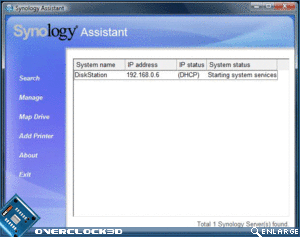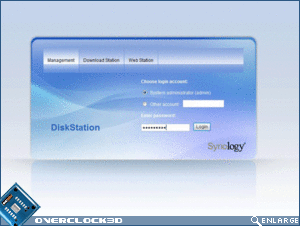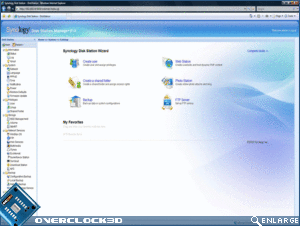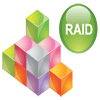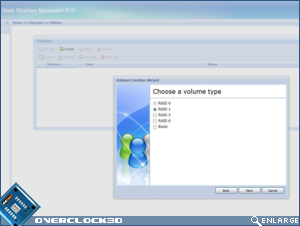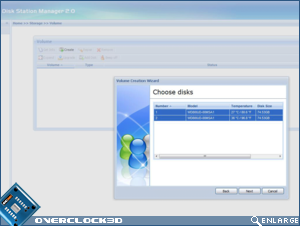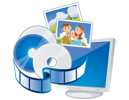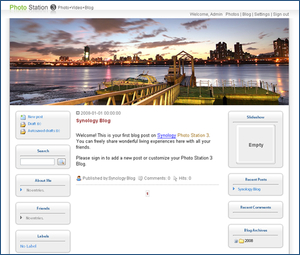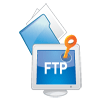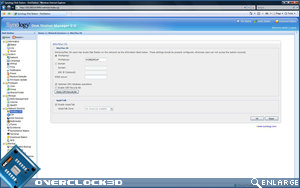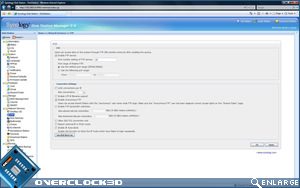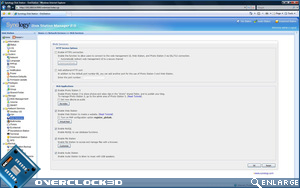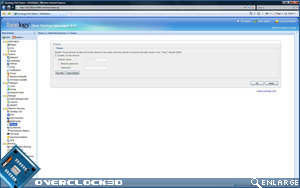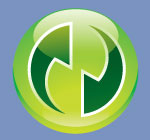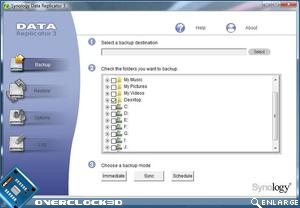Synology DS207+ NAS Server
Features and Configuration
Â
The Synology DS207+, like its purely business-orientated bigger brothers, use the Synology Disk Station Manager 2.0 (SDSM 2.0) software in order to control and/or manipulate the NAS’s settings. SDSM 2.0 utilises an AJAX based GUI, which allows you manage the Synology server like you would with Windows. Furthermore, the configuration menu is very easy to use and can be setup via manual configuration or through easy to use configuration wizards. In order to keep this review at a reasonable word count, instead of the 20 or so pages that it could easily consume, I have chosen to cover the main features that an everyday user would likely utilise. If you are interested in reading a little more on the Synology Disk Station Manager 2.0 then you can read more on it and its features here.
Â
Â
The Synology Assistant is one of the pieces of software that comes on the installation disk; it finds your NAS server for you and provides the interface between your computer and the DS207+.
Â
Â
Once the Synology Assistant has found your NAS, it will forward you onto the login screen. Synology has provided you with a default username and password, but you can change it once you enter into the configuration menu. From the image above (right) you can see the sheer amount of features that the Synology DS207+ offers. I’ll give you a brief run-down of them for you below:
Â
Â
The Synology DS207+ offers three storage options: Basic; RAID 0 and RAID 1. The DS207+ will allow you to upgrade to RAID 1 from a single basic disk and it will even rebuild your RAID 1 array should you wish to move to larger Hard Disk Drives…All done ‘on the fly’. You can set up what sort of Hard Disk Configuration you wish to run with courtesy of the configuration menu. One thing to note is that you cannot set the stripe size should you wish to run a RAID 0 array.
Â
Â
The DS207+ took around six minutes to format both of my drives into a RAID 0 array.
Â
Â
 If you spend a lot of time uploading photos to free photo sharing sites,Synology’s Photo Station 3 simplifies photo sharing into a few steps. Furthermore, you have full control over who can view your photos. In addition to sharing your photos, you can create and share your own blog with Synology’s Photo Station 3
Â
Â
Â
The Synology DS207+ allows for a plethora of useful network tools and protocols. In addition to an inbuilt iTunes Server and Audio Server, the Synology DS207+ supports Win/Mac OS compatibility (including AppleTalk); FTP with SSL/TLS; EZ-Internet; Telnet/SSH and NFS support. The Win/Mac OS compatibility/cross-talk server would be very handy in Small Office Home Office (SOHO) environments where there are both Windows and MAC OS computers requiring access to important files. Nice touch Synology.
Â
Â
The inclusion of an FTP server with Secure Socket Layer (SSL) and Transport Layer Security (TSL) explicit encryption makes file transfer both fast and secure. HTTPS also makes an appearance here for the security conscious.
Â
Â
 For the audio buffs and connoisseurs of fine music, the DS207+’s ability to run both an iTunes and Audio Server will be a welcome addition. The iTunes Server supports MP3, M4A and M4P formats, but the playlist format supports M3U and WPL respectively.
Â
The DS207+’s inbuilt Audio Server supports all major formats including: AAC, FLAC, M4A, MP3, Ogg Vorbis, WMA and WMA. VBR. Streaming media content over the internet hasn’t been forgotten either, with support for SHOUTcast and RadioIO Internet radio.
Â
The Synology DS207+ also has the ability to host your own personal website with the inclusion of MySQL 5.0.51.
Â
Â
Data backup is so important but people tend to ignore it, and the DS207+ makes data backup so complete and automatic that backups can always be done without your attention. The DS207+ has a local backup facility that allows you to back up data from the DS207+ to an external hard drive attached to the DS207+ via the USB port.
Â
Desktop Backup simplifies the whole desktop backup process with Data Replicator 3. Plus the Synology DS207+ is compatible with many of the reputable backup utilities currently available on the market (Acronis True Image; Symantec Backup Exec; EMC Retrospect and LaCie SilverKeeper)
Â
Let’s head over the page to see how the Synology DS207+ performed during our testing…



